What is Japandi furniture?
Japandi furniture is where minimalism meets functionality and warmth, and the best of two design worlds (Japanese and Scandinavian) merge into one.
Japandi designs attempt to combine the warmth and practicality of Nordic styles with the grace of Japanese aesthetics – two styles I think complement each other perfectly.
It came to the mainstream in 2017, and boomed throughout the 2020 global pandemic – perhaps because we were spending more time at home reflecting on our space.
At the core of Japandi is an appreciation for simplicity, functionality, and natural beauty.
Both Japanese and Scandinavian design philosophies emphasize the importance of creating spaces that feel inviting and calming, while ensuring that every piece of furniture serves a purpose.
So, what should you look for when picking out Japandi furniture? Here’s my take…
But first, for some specifics:
Here’s a list of popular Japandi furniture pieces and links to my posts and ideas for each one
- Japandi sideboards
- Japandi fireplaces
- Japandi barstools
- Japandi TV stands
- Japandi curtains
- Japandi desks
- Japandi bed frames
- Japandi nightstands
- Japandi chairs
- Japandi rugs
- Japandi coffee tables
- Japandi benches
- Japandi dining tables
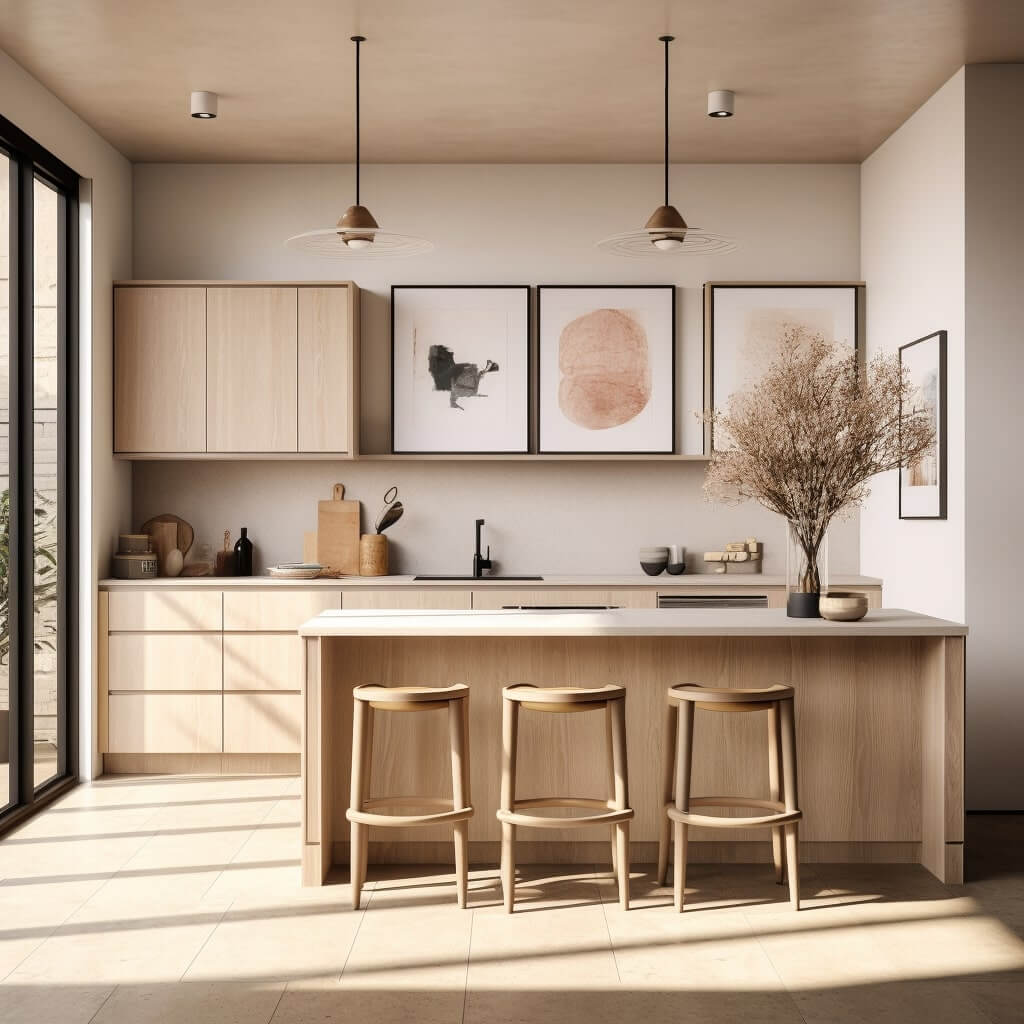
The characteristics of Japandi furniture
In Japandi interior design, every piece of furniture is carefully chosen for its usefulness and aesthetics, ensuring that form and function work together.
I find that this approach not only makes your home visually calming, but also fosters a sense of logic and order.
And it makes sense, too.
Because if you’re designing a room with minimal furniture to get that Zen feeling, you need the pieces of furniture you do include to really work for you.
They need to be practical, space-saving, efficient, and multifunctional where possible (while maintaining the Japandi look). Particularly important if you’re designing a Japandi apartment.
In terms of style, from the Japanese side, I look for refined details such as delicate wood joinery and a strong connection to nature.
On the Scandinavian end, I look for clean lines, ergonomic shapes, and a focus on comfort.
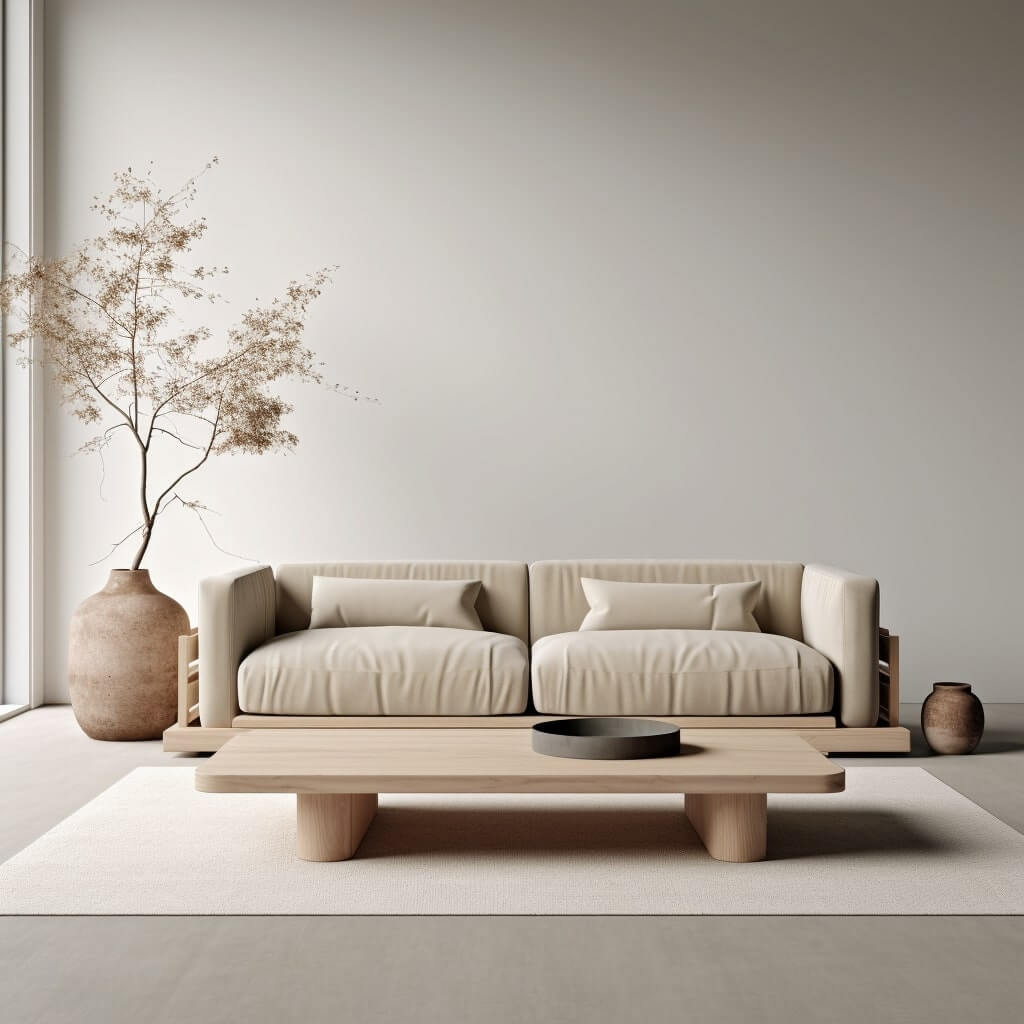
Japandi furniture materials
From sustainably sourced wood to natural fibers and metal accents, I find that each element should contribute to the overall aesthetic of Japandi furniture.
I always feel wood plays a pivotal role in Japandi design, lending warmth and character to each piece.
I usually look for sustainably sourced wood. The most common wood types in Japandi design include:
- Oak
- Walnut
- Ash
- And Japanese favorites like hinoki and paulownia
I love how each wood type has its own unique grain pattern and color, creating subtle variations that make every piece one of a kind.
Finishes like oil and wax are often used too, providing a smooth, tactile surface that invites interaction.
Also, natural fibers are another key component of Japandi furniture.
Materials like…
- bamboo
- rattan
- and linen
…bring an organic touch to the design.
I find bamboo and rattan are particularly popular for their strength and flexibility, and they’re often used in chairs and tables to create lightweight and durable structures.
I use linen to add softness and texture to upholstery, cushions, and curtains, adding a Scandinavian coziness.
Metal accents and hardware are less prominent in Japandi design, but I find they can play a role in adding visual interest and contrast.
Metals like…
- brass
- copper
- and blackened steel
…provide a touch of modernity and elegance, often used for handles, legs, and other small details.
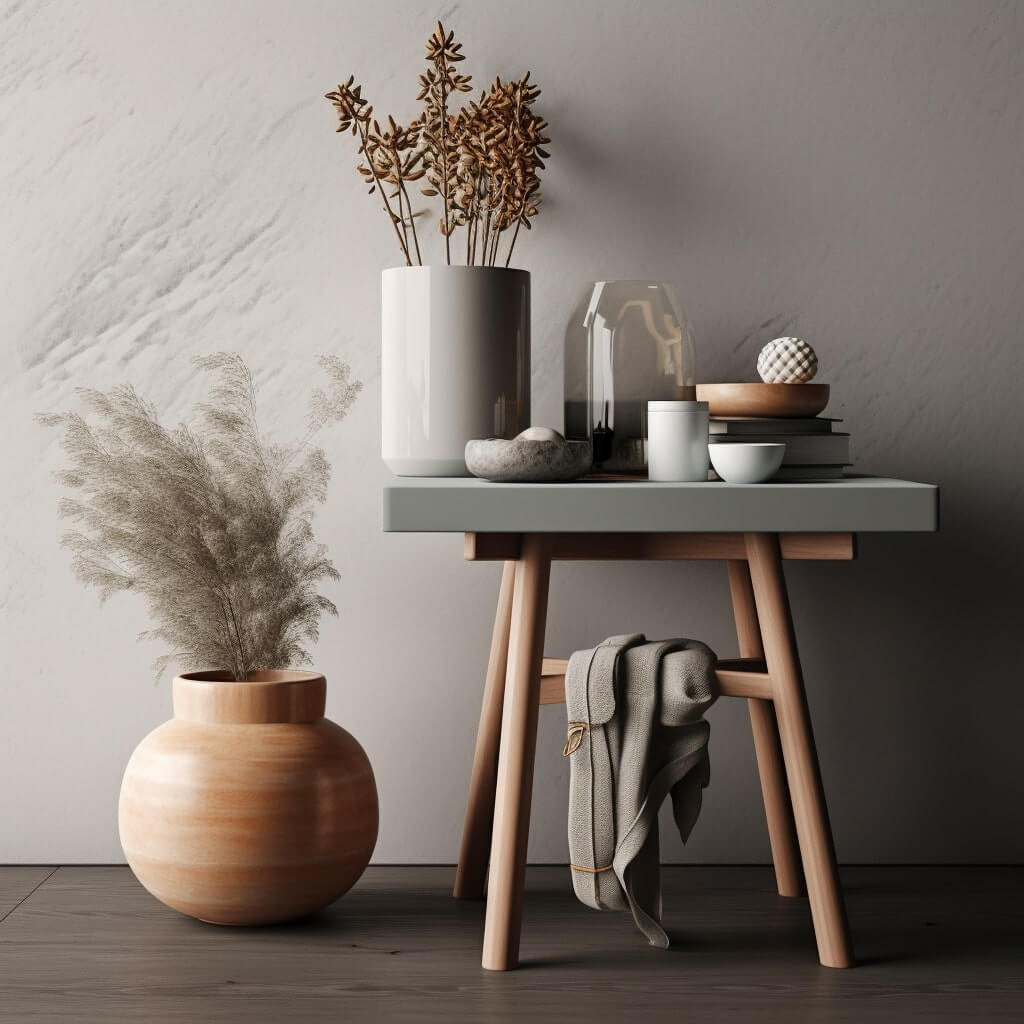
Japandi furniture crafting techniques
Japanese joinery and woodworking have a long, storied history, and Japandi design embraces these traditions.
Japanese craftsmen traditionally use techniques such as dovetail, mortise-and-tenon, and finger joints to create seamless connections between wood components.
In contrast, Scandinavian furniture construction methods emphasize simplicity and practicality, with a nod to the region’s woodworking heritage.
Techniques like dowel joinery and the use of wood screws create strong, reliable connections that ensure each piece stands the test of time.
And the incorporation of curved lines and ergonomic shapes reflects the Scandinavian commitment to comfort, making Japandi furniture as pleasant to use as it is to look at.
I think the importance of quality and durability can’t be overstated in Japandi design.
Japandi furniture gallery
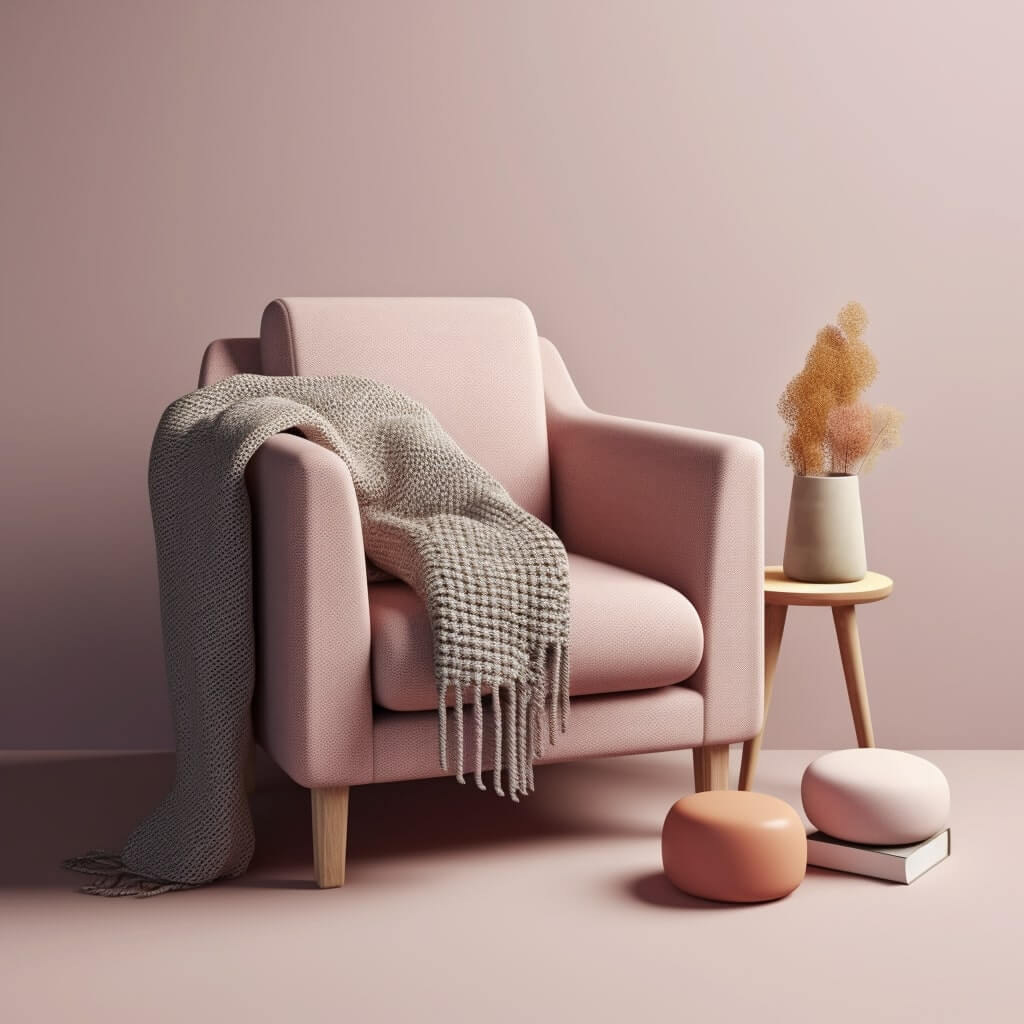
Japandi Furniture Colour schemes
In my opinion, a Japandi colour palette is all about:
- neutral tones
- muted colors
- and the occasional splash of nature-inspired accents
I use earthy hues such as beige, taupe, and soft gray to create a base, while gentle whites and creams lend a sense of airiness and lightness to the space.
I often use accent colors inspired by nature provide subtle contrast.
Think along the lines of moss green, dusty pink, or deep indigo – colors that evoke the serenity of forests, lakes, and mountains.
I usually introduce these through textiles, Japandi artwork, or small accessories.
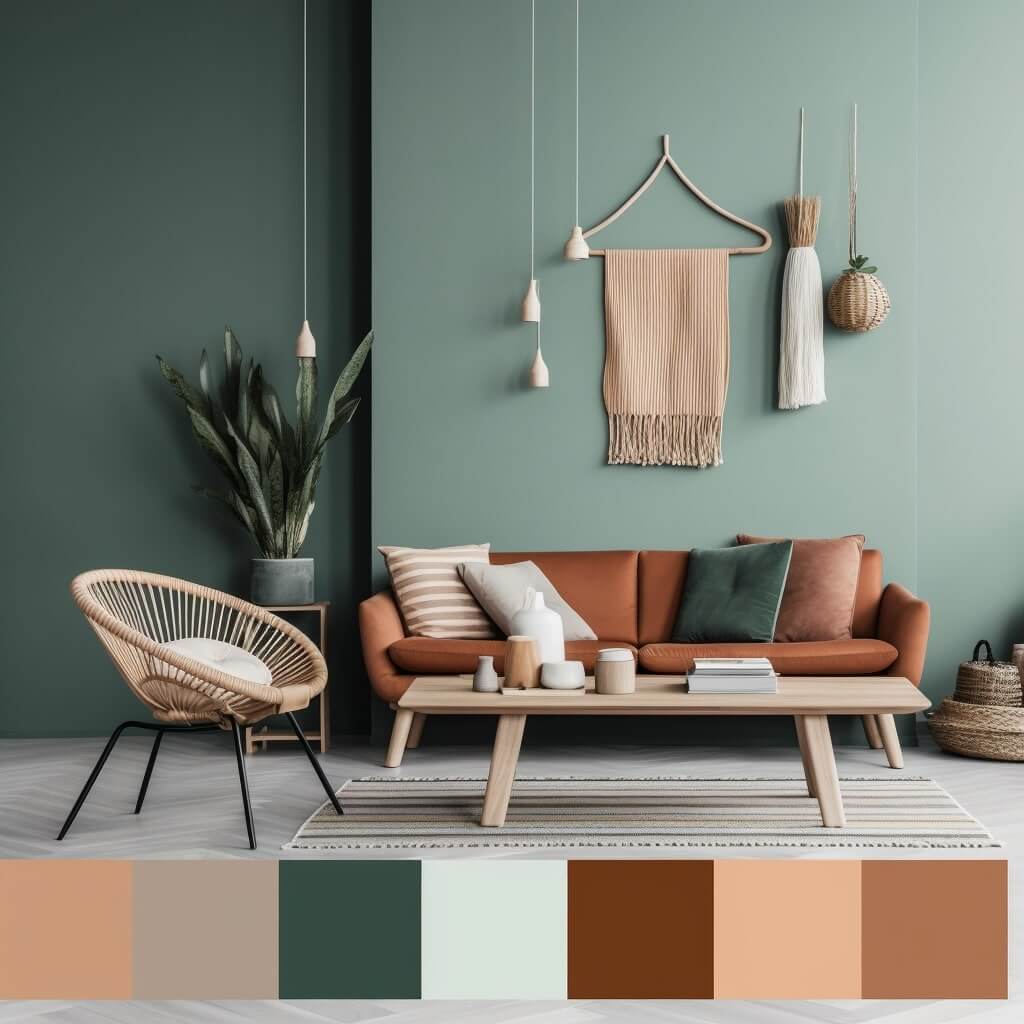
Japandi sustainable furniture
Japandi furniture isn’t just about aesthetics and functionality; for me, sustainability plays a vital role in its ethos as well.
Environmentally-friendly practices in production are an essential aspect of Japandi furniture.
Often you’ll find that craftsmen and manufacturers prioritize sustainable sourcing of materials, such as using responsibly harvested wood and natural fibers.
I find that eco-friendly finishes and treatments are often used to reduce the environmental impact of each piece as well.
The longevity and timelessness of Japandi pieces also contribute to their sustainability.
Designed to endure for generations, Japandi furniture is built to last and features a timeless aesthetic that transcends trends and fads.
This is why I think Japandi furniture offers a responsible and conscious choice for those who value both style and environmental stewardship – giving you peace of mind you’re doing good for the planet, which contributes to your overall mental wellness when you’re in your home space.
Of course, there’s nothing more sustainable than upcycling an old vintage piece into the Japandi style. And Japandi fits well with a retro design, too!
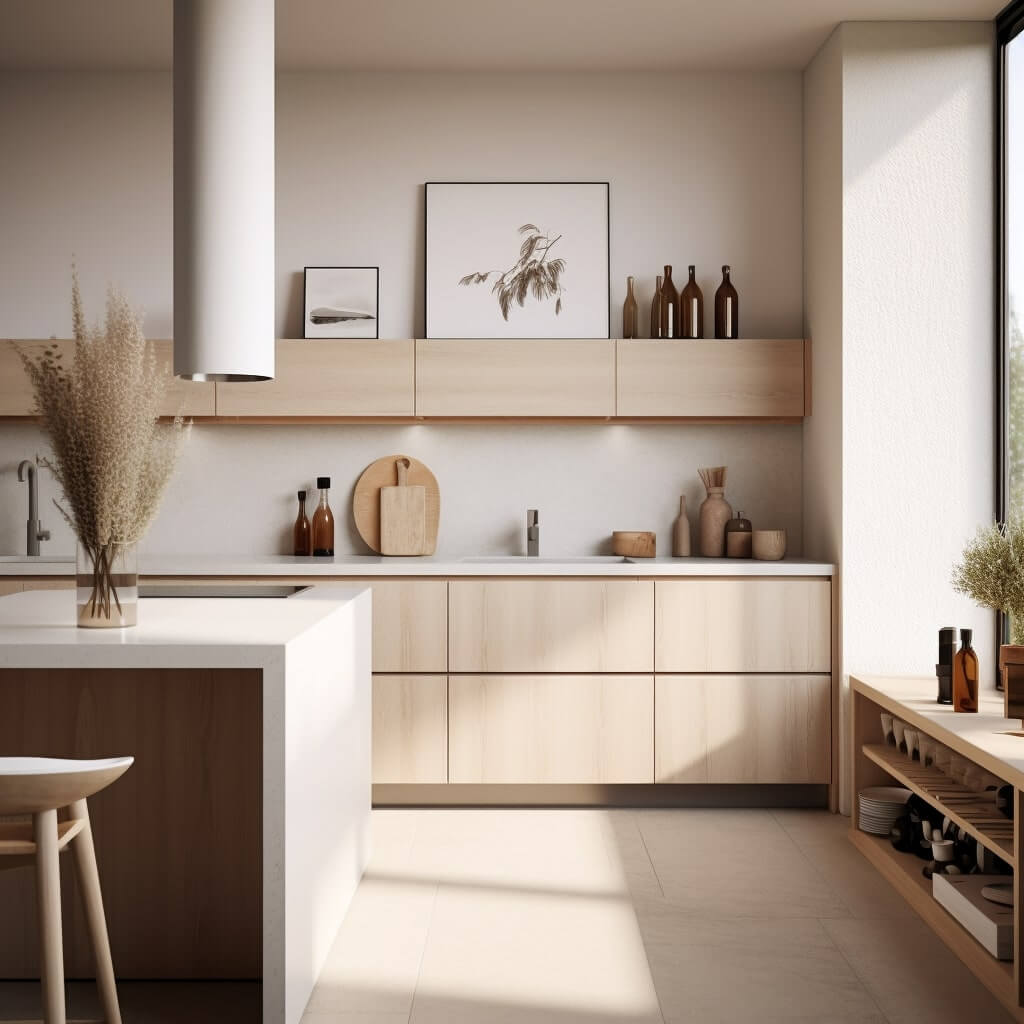
Japandi light fixtures
For me, soft, diffused lighting creates a sense of intimacy in Japandi spaces.
Backlit furniture and objects cast a gentle glow that really brings out the the textures and colors of Japandi objects.
I try to use floor lamps with yellow or orange bulbs to generate that sense of warmth, and avoid harsh, bright lighting – overhead light fixtures are typically unflattering when it comes to Japandi style.
More on Japandi light fixtures here.
Picking Japandi furniture for your home
Curating a Japandi living space starts with selecting a few key pieces of furniture that embody minimalism and functionality.
For Japandi living rooms, I think about a comfortable but streamlined sofa, a low-profile coffee table, and a few accent chairs with clean lines, and a simplistic Japandi TV stand, for example.
Remember to leave plenty of open space, allowing the room to breathe and maintaining that sense of serenity.
For flooring, a large, neutral Japandi rug adds coziness and simplicity, especially when strawn out before a beautiful fireplace. A Japandi sideboard also adds lots of storage (which is hard to come by in a minimalist home design), while maintaining that sleek and elegant style – particularly good for your entryway.
For Japandi-inspired bedrooms, I focus on the essentials: a simple, sturdy, low Japandi bed frame, a functional nightstand, and space-efficient storage for clothing and personal items.
Choose bedding in soft, neutral tones, – you can add a touch of color with throw pillows or a cozy blanket.
I find dining areas can also benefit from the Japandi touch.
For example, I sometimes look for a dining table with a solid wood top and sleek metal legs, surrounded by chairs featuring natural materials like rattan or linen upholstery.
You can pick out some minimalist tableware and a few thoughtfully chosen Japndi decorative pieces.
Here are some top tips on creating a Japandi bathroom, too.
And here are some for a Japandi kitchen – from Japandi bar stools to kitchen islands.
Where to buy Japandi furniture
Here are my go-tos to help you on your quest for authentic Japandi furnishings.
Local artisans and craftsmen are a great starting point, as they often create handmade, one-of-a-kind pieces that embody the Japandi spirit.
I like to visit local markets, craft fairs, or small furniture workshops in my area to discover unique treasures made with care and attention to detail.
But online retailers and specialty stores also offer a vast selection of Japandi furniture brands.
Do your research and look for reputable brands that emphasize sustainability, craftsmanship, and Japandi design principles. I encourage you to read customer reviews and ask about the materials and manufacturing processes to ensure you’re making an informed decision.
When selecting authentic Japandi pieces, focus on quality, materials, and design.
Look for Japandi style furniture made with sustainably sourced wood, natural fibers, and expert craftsmanship.
And keep in mind the key principles of Japandi design: minimalism, functionality, and a harmonious blend of Japanese and Scandinavian aesthetics.
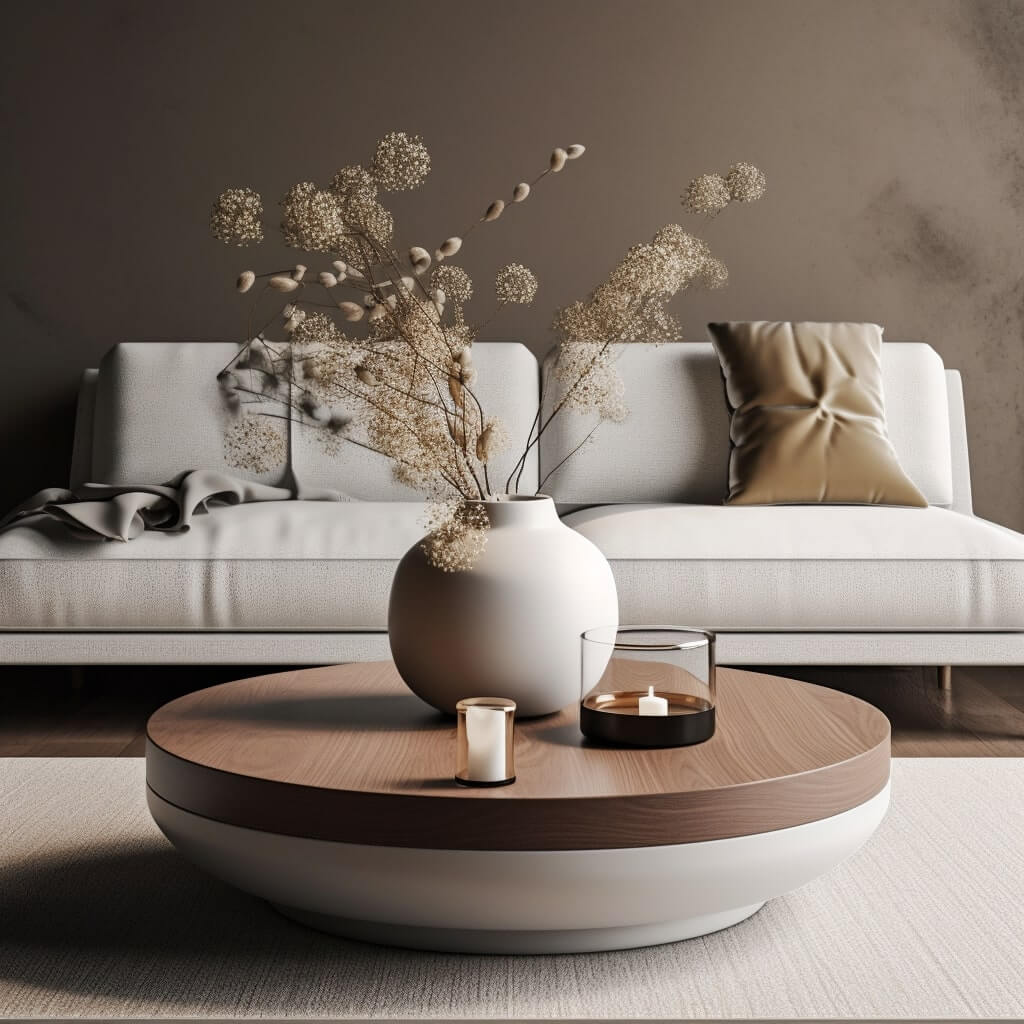
FAQs
What is Japandi style furniture?
Japandi style furniture combines Japanese minimalism and Scandinavian functionality, featuring clean lines, neutral colors, and natural materials for a serene and balanced look.
What kind of wood is used in Japandi?
Japandi often uses light-colored woods like oak, ash, or beech, as well as darker options like walnut or teak for contrast and warmth.
What are the rules of Japandi style?
Key Japandi rules: minimalism, functionality, natural materials, muted colors, and a mix of Scandinavian and Japanese design elements.
What is the difference between Scandi and Japandi?
Scandi focuses on hygge (coziness) while Japandi emphasizes wabi-sabi (imperfect beauty), creating a fusion of warmth and minimalism.
Is Japandi style expensive?
Japandi style can be affordable or expensive, depending on your choice of materials and pieces. Shop wisely for quality and longevity.
How to make a Japandi style home?
To create a Japandi home, declutter, choose neutral colors, mix Scandinavian and Japanese elements, use natural materials, and prioritize function and simplicity.







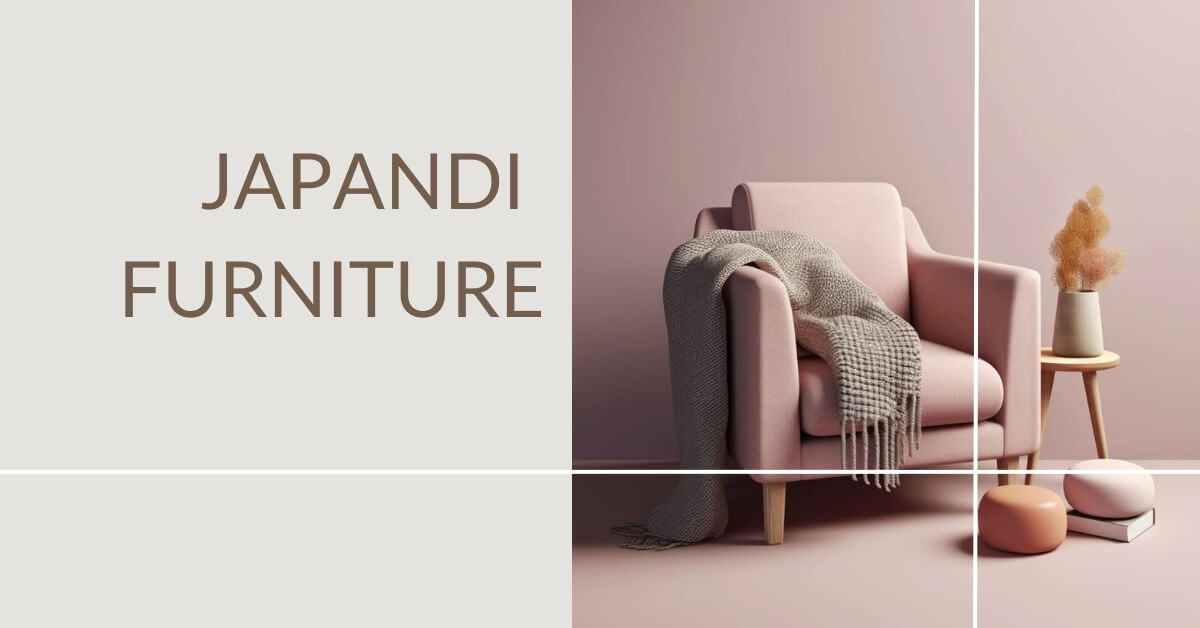



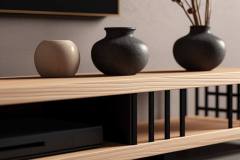




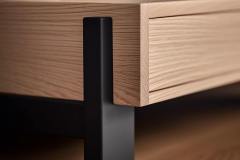


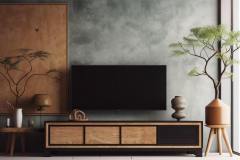





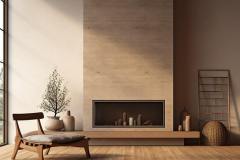


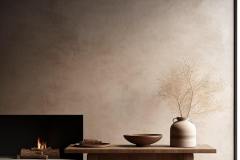




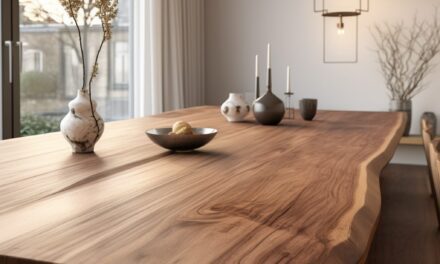

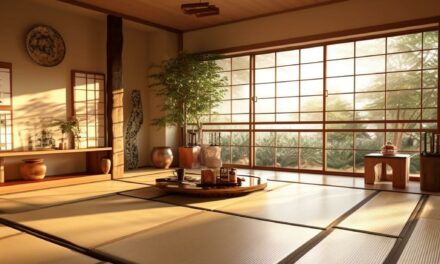
I think other web site proprietors should take this site as an model, very clean and excellent user friendly style and design, let alone the content. You are an expert in this topic!
This design is wicked! You certainly know how to keep a reader entertained. Between your wit and your videos, I was almost moved to start my own blog (well, almost…HaHa!) Great job. I really enjoyed what you had to say, and more than that, how you presented it. Too cool!